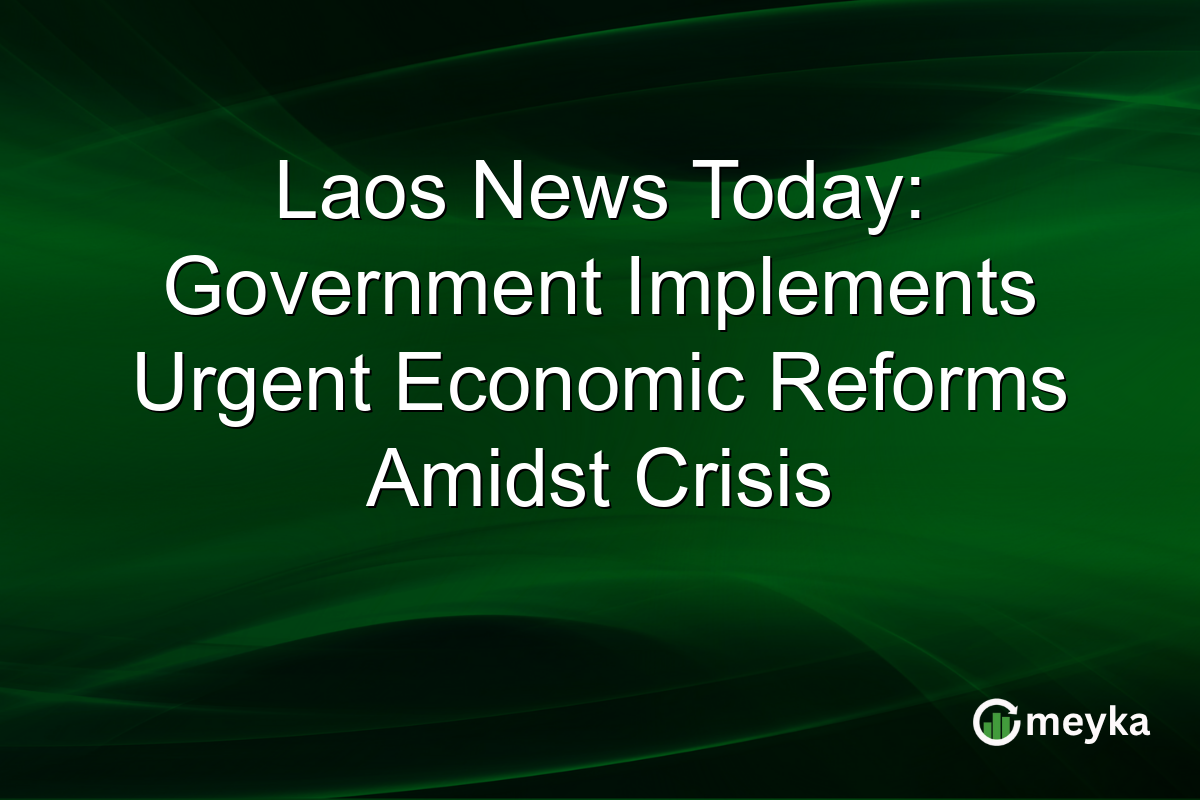Laos News Today: Government Implements Urgent Economic Reforms Amidst Crisis
Laos is moving swiftly to counter its growing economic challenges. As inflation rates soar and currency values waver, the Lao government has rolled out a series of urgent reforms aimed at stabilizing the economy. These include tailored measures to tackle inflation, currency stabilization strategies, and decisive actions for managing public debt. Let’s delve into these initiatives and understand their impact on the country’s economic landscape.
Addressing Inflation: Key Measures
Inflation in Laos is rising rapidly, prompting the government to deploy immediate interventions. Initiatives include tighter monetary policies and price controls on essential goods. By increasing interest rates, the government aims to curb excessive spending, which is a key driver of inflation. This shows the government’s commitment to protecting purchasing power.
For those tracking Laos inflation measures, these actions are significant. The approach not only targets immediate relief but lays the groundwork for long-term stability. Inflation control is crucial for maintaining public confidence and supporting economic growth.
Currency Stabilization Efforts
Currency volatility has been a pressing concern in Laos. The kip, Laos’ currency, has faced depreciation pressures, affecting trade and investments. To counter this, the government has introduced stringent currency stabilization strategies.
These strategies include foreign exchange interventions to support the kip’s value. Additionally, agreements with neighboring countries aim to enhance bilateral trade and reduce exchange rate dependency. For investors, these measures signify a strong governmental effort to maintain economic equilibrium.Read more here.
Public Debt Management: A Priority
Laos’ public debt levels are a major concern, requiring immediate management strategies. The government is focusing on restructuring existing debts and negotiating more favorable terms with international creditors.
Efforts to streamline public spending and enhance revenue collection are part of the broader reform plan. By prioritizing debt reduction, Laos aims to free up resources for essential services and infrastructure. For those observing Laos public debt management, these steps indicate a strategic pivot towards sustainable fiscal policies.
Final Thoughts
The Lao government’s urgent economic reforms aim to address immediate challenges while setting the stage for a more stable and prosperous future. By focusing on inflation control, currency stabilization, and public debt management, policymakers are taking decisive steps to steer the economy back on track. For residents and investors, these reforms provide a renewed sense of confidence in Laos’ economic direction. As always, platforms like Meyka offer timely insights into such developments, underscoring the importance of data-driven analysis in navigating economic changes.
FAQs
Laos’ reforms focus on tackling inflation, stabilizing the currency, and managing public debt. These initiatives are designed to stabilize the economy and protect vulnerable groups.
Laos is implementing tighter monetary policies, including raising interest rates and controlling prices of essential goods to curb inflation and protect purchasing power.
The government is engaging in foreign exchange interventions and forming trade agreements with neighboring countries to stabilize the kip’s value against other currencies.
Public debt management involves restructuring existing debts and improving fiscal policies to reduce the overall debt burden and allocate resources more effectively.
Disclaimer:
This is for information only, not financial advice. Always do your research.






